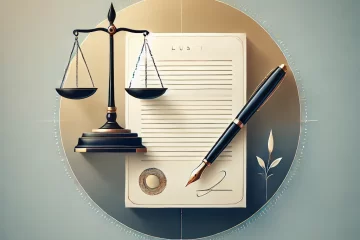![]()
Introduction:
Courts, in our country or any other, exist for solving disputes between parties and delivering justice. Whenever anyone finds themselves not being able to solve a conflict with a particular party on their own, they have the right to reach out to courts by the way of filing a suit/plaint. After they do the same, a suit is said to be instituted. Section 15 of the Civil Procedure Code[1] says that a suit shall be instituted in the lowest court of competent jurisdiction. It is also important to note that every court has specified pecuniary & territorial jurisdictions and hence we cannot just file a suit as per our convenience.[2] There are various rules and provisions according to which suits have to be filed in courts and not following any of them shall result in the court dismissing the plaint with or without an additional monetary fine.
This article seeks to convey the appropriate ways and regulations given by law to file a plaint, when will a plaint be rejected by the court; as well as to learn what types of mistakes are made by many people in their plaints alongwith how it affects the courts by taking an example of case law and critically analyzing the same.
The Issue and the Case
All of us have heard the term “5G” as talks about it have been in the air since 2019. It is the 5th generation wireless mobile network technology that has now become reality and claims to change our lives in every possible aspect of life. Hospitals will be able to conduct surgeries remotely, mass automation of current manual processes will take place and cities will become smarter. Artificial intelligence and the Internet of Things (IoT) will become more mainstream. High data speeds, up to 100 times faster than the current 4G network will help people multitask efficiently, connect with anyone virtually with super-low latency alongwith high clarity, and downloading/uploading files and data which earlier took several minutes would now take mere seconds. All thanks to the high band/frequency waves everything will be faster and much easier than it ever was.
However, with great convenience comes great risk. Many people, over the last 2 years have been talking against the public availability of this technology saying that it would have many negative impacts on the environment. Since 5G is a very new technology, its long-term effects remain unknown as of now, but there are still some things that we cannot ignore. The introduction of this technology to billions of people will also inevitably affect ecosystems. A Punjab University study found that sparrows exposed to cell tower radiation for 5 to 30 minutes produced disfigured eggs.[3] In Spain, the nesting, breeding, and roosting of birds were disturbed by microwave radiation from a cell tower.[4] Wireless frequencies have also been found to interfere with the navigation systems & circadian rhythms of birds thereby affecting migration.[5] Excess of this radiation leads to the death of birds in huge numbers. There have been several studies like this that mention the effects of this radiation on other small animals and insects like bees.
Famous actress turned activist Juhi Chawla filed a suit regarding the harmful effects of Radiofrequency (RF) radiation asking the court to make the defendants certify that this new 5G technology will be safe to all of mankind as well as all other living organisms. She also pleaded the same while talking and putting emphasis on and about the safety of future generations, infants, and senior citizens. She clarified to the public that she was not ‘against’ this technology from the very beginning and was just concerned about the safety and health of people.
What went wrong and why was her plaint dismissed?
No matter how good your intentions are, proper execution and procedural commitment are things that are to be kept in mind while filing a suit. It is not child’s play and the court is not a playground either. The Delhi High Court, on June 4th, 2021 dismissed the suit along with a statement that conveys the court’s frustration as well as concern for awareness – “This is a classic textbook case of, how not to draft a plaint, which should be taught in law colleges and to young lawyers so that such bloopers in drafting of pleadings, damaging to one’s own client, are avoided”.[6] What exactly were the defects in the plaint and how do such plaints affect the court? Let’s see.
- Order VI Rule 2(1) of the Code of Civil Procedure provides that the plaint must contain factual statements in a very concise manner but no evidence by which these are to be proved. The plaintiff, however, did not comply with this rule as neither the statements were in a concise format nor the condition of ‘not mentioning the evidence’ has been fulfilled.
- Order VI Rule 9 of the Code of Civil Procedure provides that the plaint should not contain contents of any document unless the precise words of that document or rather some part of it is material. The plaintiffs, on the other hand, did not comply with the rule and reproduced several documents in the plaint submitted.
- The Court said that the plaint was filled with several unnecessary, fatuous, irksome, and scandalous averments which are liable to get taken down according to Order VI Rule 16 of the Code of Civil Procedure.
- It was also seen that the plaint did not reflect the compliance of Order I Rule 3 of the Code of Civil Procedure in joining a total of 33 defendants in a single suit.
- The plaintiffs attached several causes of action while not abiding by Order II Rule 3 of the Code of Civil Procedure.
- The Plaintiffs also failed to verify the plaint before submitting it, which is compulsory under Order VI Rule 15 of the Code of Civil Procedure.
- It was observed by the Court that in the Affidavit filed with the plaint the plaintiffs testified that only the paras 1-8 were true to their knowledge and the paras 9-169 were based on information & legal advice. This means that the plaintiffs themselves have no knowledge of what averments they have made in the plaint. A suit that is completely based on the information and legal advice is unmaintainable.
- The Court said that as the plaintiffs had no knowledge about the averments they made and the entire plaint was based on the information and the legal advice received by the plaintiffs, it looked like the plaintiffs wanted an inquiry to be done by the Court in the averments made which is not at all admissible.
- Section 34 of the Specific Relief Act, 1963 talks about “declaratory suits”. In this, any person who is eligible to any legal character can file a suit against some other person who denies it or is interested in doing so. In the above-discussed case, the plaintiffs never even approached the defendants for claiming any rights and so, obviously, there existed no occasion for the defendants to reject or even respond to the plaintiffs’ rights. Hence, this factor makes the maintainability of the suit questionable.
- Section 39 of the Specific Relief Act, 1963 talks about compulsory injunctions. It mentions the two requirements of the presence of an obligation of the defendant towards the plaintiffs & the breach of the same by that defendant. It was seen in the above case that both these conditions were not fulfilled.
- By giving precedence of cases – State of Andhra Pradesh vs. Gundugola Venkata Suryanarayana Garu[7] , State of A.P. vs. Pioneer Builders, A.P.[8] and State of Kerala vs. Sudhir Kumar Sharma[9] , the Court clarified how the plaintiffs did not submit the compulsory notice under Section 80(1) of the Code of Civil Procedure which talks about giving an opportunity to the government to reconsider the issue at hand, make amendments and try to settle the same outside the court. This was seen as a crucial factor and the absence of which gave more than enough reason for the Court to dismiss the application.
Essentials of maintainability of a plaint/suit (According to CPC)
There is a detailed process that has been laid down according to which a plaint needs to be filed. When we talk about the ‘plaint’ itself, it is a written complaint which is also called an allegation. Only the plaintiff can ‘file’ the plaint and against the defendant.
- First, the plaintiff is needed to write the name of the court in which he/she is filing the plaint.
- Next, the plaintiff is required to convey (in writing) the nature of the complaint to the court.
- The name as well as address (permanent) of both the plaintiff and the defendant has to be written in the plaint.
- It has to be mentioned whether anyone out of the plaintiff or the defendant is a minor or a person with an unsound mind.
- The facts explaining the cause of action along with the conditions of when it came to be/ arose have to be mentioned.
- Whatever the relief that the plaintiff seeks from the court has to be written.
- If it is a money suit, the exact amount of money claimed shall be mentioned. (Rule 2)
- Whenever the subject of the suit is “immovable property”, the plaint should have a proper description of that property depending on which it can be easily identified. (Rule 3)
- In cases where the plaintiff brings action against the defendant in a “representative character”, it should be mentioned in the plaint that not only does he/she/they have interest in the subject of the suit but also have taken any and all measures (which are legally available) for instituting a suit regarding it. (Rule 4)
- The plaint must also mention whether or not the defendant is interested in the subject matter of the suit as well as that he/she/they are liable to be called upon by the plaintiff to be confronted regarding the demands. (Rule 5)
- Whenever a suit is filed after the period given by the law of limitation expires, the plaint should show upon which grounds exemption from such a law is being claimed. (Rule 6)
- Every plaint shall state specifically the relief which the plaintiff claims either simply or in the alternative, and it shall not be necessary to ask for general or other relief which may always be given as the court may think just to the same extent as if it had been asked for; the same shall apply to any relief claimed by the defendant in his written statement.[10] (Rule 7)
- Where the plaintiff seeks relief in respect of several distinct claims or causes of action founded upon separate and distinct grounds, they shall be stated as far as may be separately and distinctly.[11] (Rule 8)
- Where the court orders that the summons is served on the defendants in the manner provided in rule 9 of Order V, it will direct the plaintiff to present as many copies of the plaint on plain paper as there are defendants within seven days from the date of such order along with the requisite fee for service of summons on the defendants.[12] (Rule 9)
When will a plaint be rejected (According to CPC)
- When the plaintiff does not mention or refuses to disclose the cause of action.
- When the relief which was sought by the plaintiff is undervalued and when the plaintiff on being told by the court to rectify the valuation under a specific time limit, fails to do the same.
- When the relief sought is correctly valued but the plaint was written on a paper that was insufficiently stamped; when the plaintiff was told by the court to stamp it appropriately within the given amount of time limit, he failed to do the same.
- When the plaint has not been filed in duplicate.
- When the plaintiff does not/ refuses to comply with provisions given in Rule 9.
Result & Conclusion
All the mistakes committed by the plaintiffs, as correctly said by the Court, “abused and misused the process of law”. This in turn led to the wastage of precious judicial time. “Law” or the process of “delivery of justice” exists for the masses so that they look for remedies for their problems. This process requires a lot of effort, time, and energy. All the essentials mentioned above which are mandatory for a plaint to be maintainable must be followed sincerely and any plaint instituted which does nothing but waste the courts’ time and insults these efforts of the same will lead to its immediate dismissal and will get immortalized as a bad example in the list of ‘textbook example of how not to…’ cases. Additionally, during the online court proceedings when various unknown people started disturbing the court, it was held by the court that this suit was filed for getting publicity which is evident from the fact that the plaintiffs shared the video conferencing link for the proceedings on their social media handles. This is unprofessional and stupid at the same time. An amount of Rs. 20 lakh was imposed on the plaintiffs to be submitted at Delhi State Legal Services Authority (DSLSA). This amount will be used by the DSLSA for treating victims of road accidents. Awareness should be spread regarding the consequences of such careless and dishonorable behavior. Not only monetary but also other types of fines and punishments must be introduced as most people with rich backgrounds easily pay the fine and go about like nothing happened. Young Lawyers must be taught all types of drafting in their law schools and colleges so that they don’t grow up to submit defective plaints in courts. Judiciary must be respected and treated with honor.
References:
[1]Code of Civil Procedure, 1908, http://www.bareactslive.com/ACA/ACT379.HTM#15
[2] General Principles of Institution of Civil Suits, Para 2 Line 5 & 6, http://www.legalserviceindia.com/laws/index.html
[3] The Coming 5G Revolution: How will it affect the environment, By Renee Cho, August 13, 2020 , under ‘Radiation’, Para 1 Line 2 onwards, https://news.climate.columbia.edu/2020/08/13/coming-5g-revolution-will-affect-environment/
[4] Id at para 1 line 5
[5] Id at para 1 line 7
[6] Ms. Juhi Chawla and others vs. Science & Engineering Research Board & others, see full judgement- https://indiankanoon.org/doc/74750336/
[7] State of Andhra Pradesh vs. Gundugola Venkata Suryanarayana Garu, AIR SC 11 (1965), see full judgement- https://indiankanoon.org/doc/795303/
[8] State of A.P. & Ors. vs. Pioneer Builders, A.P., 12 SCC 119 (2006), see full judgement- https://indiankanoon.org/doc/1116141/
[9] Govt. of Kerala & Ors. vs. Sudhir Kumar Sharma & Ors., 10 SCC 178 (2019), see full judgement- https://indiankanoon.org/doc/126060277/
[10] Order 7- plaint rule 7,8,9,10,11,12 of CPC, under plaint rule 7, https://www.aaptaxlaw.com/code-of-civil-procedure/order-VII-code-of-civil-procedure-rule-7-8-9-10-11-12-plaint-7-8-9-10-11-12-order-VII-of-cpc-1908-code-of-civil-procedure.html
[11] Id under plaint rule 8
[12] Id under plaint rule 9



0 Comments